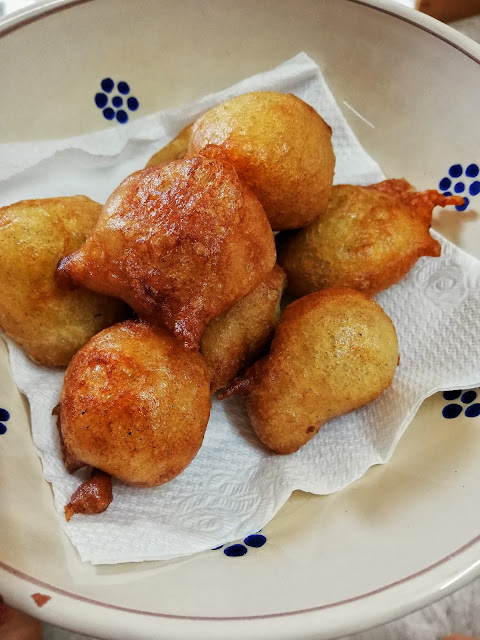What are "pettole"? Let's discover this traditional food, which is a symbol of Christmas period in the area of Taranto.
Pettola. A little pillow of soft and hot dough. You take it from a corner with the tip of your thumb and your index finger: it’s fresh of frying, you know it’s hot, but you’re willing to risk for it. You bring it to your mouth and bite it, curling your lips not to burn them at least, and “crunch”. The thin crust doesn’t oppose: you sink your teeth in its soft heart.
Everything happens while your mother tells you off because you stole a pettola just taken off boiling oil and see your face writhing in the battle against heat in your mouth.
Each year in this period, the scene just described is repeated. As tradition wants in the area of Taranto, Saint Cecilia marks the beginning of Christmas period and we celebrate it making pettole. If you want to know more about the celebration for Saint Cecilia, I leave here the link for the dedicated blog post.
What are Pettole?
Back to pettole: what are they? They’re little balls made of yeast and fried dough: once put in boiling oil, the piece inflates like a little cloud.
They can be empty, filled (at home, for example, the most appreciated fillings are mushrooms, cauliflower and salt fish) or sweet and flavoured with lemon.
Because of their softness, we say that they represent Child Jesus’ pillow, which is the reason why we prepare them for every festive day in Christmas period, even though, let’s say it, any excuse to make them (and to eat them!).
The Origins of Pettole
Legend tells that the fist pettole were made by mistake. A woman of Taranto got up early in the morning, as always, and made the dough for bread and leave it to rise. Meanwhile, she heard music of bagpipes from the street: there were shepherds from Abruzzo come in Taranto with their flocks for transhumance.Still nowadays that atmosphere lives in the night of Saint Cecilia. Instead of the shepherds from Abruzzo , there’s the band that plays melodies walking along the streets of the town. The spirit of sharing also survives between people: in the halls of buildings, in the old town centre, they fry and eat pettole in fellowship and happiness.
Unfortunately, since I discovered to have celiac disease, I can’t participate to these events, but I keep my traditions, overall when they are so good. We created a recipe for perfect gluten free pettole. Since cooking isn’t exactly my thing, I leave here the link for the recipe of Stefania from the blog Tra monti, mari e gravine (who also is the one who tells me off when I steal just fried pettole, as I wrote above).
I hope that this dive in traditional food has brought a bit of Christmas atmosphere to you, too, and, if you’re going to make pettole, let me know about the result and if you liked them.



Commenti
Posta un commento
Feel free to leave a comment!
I would be glad to know your opinion! ;)
Thank you! :)